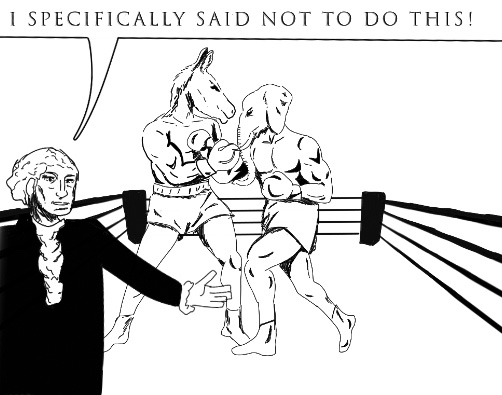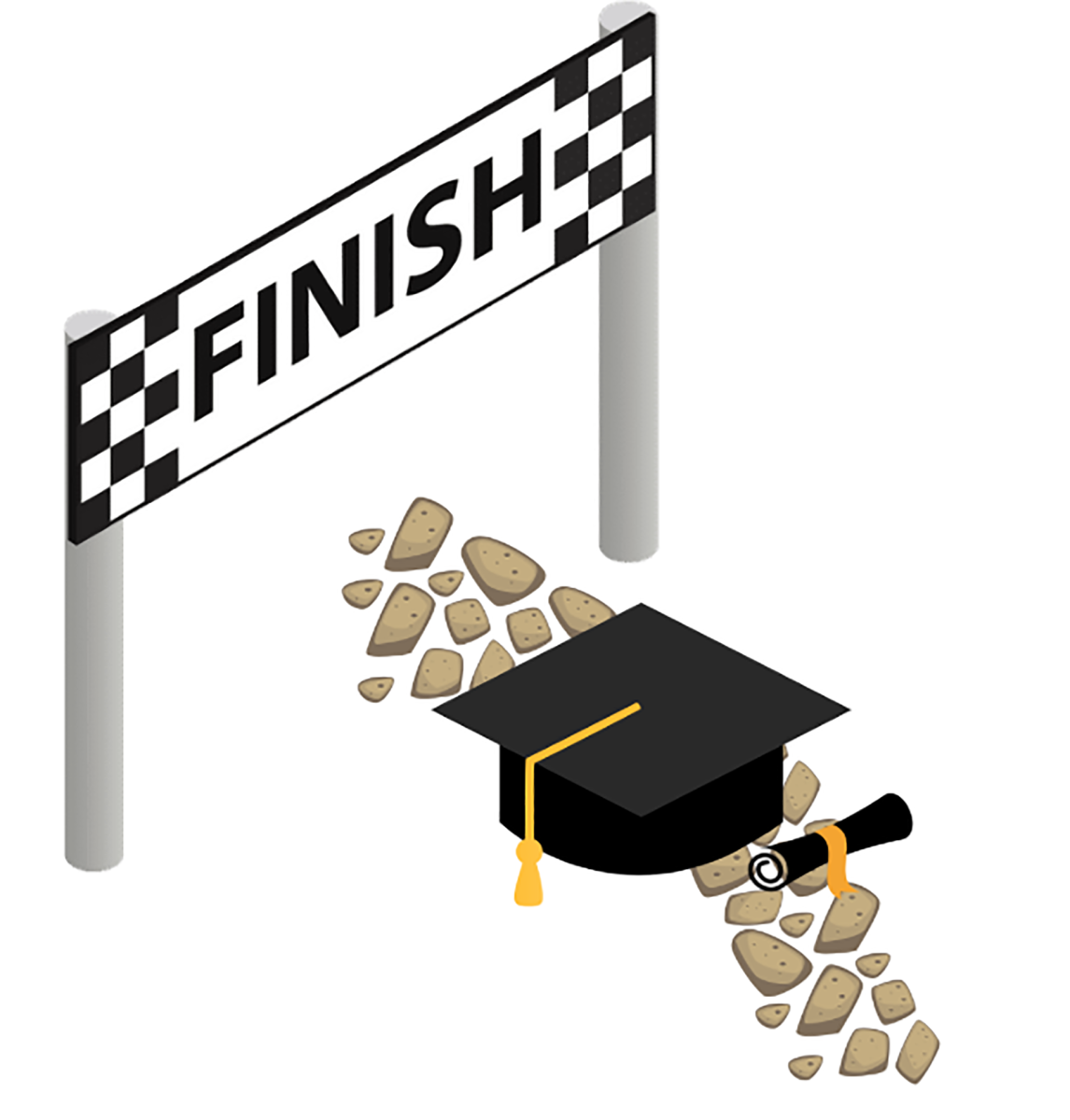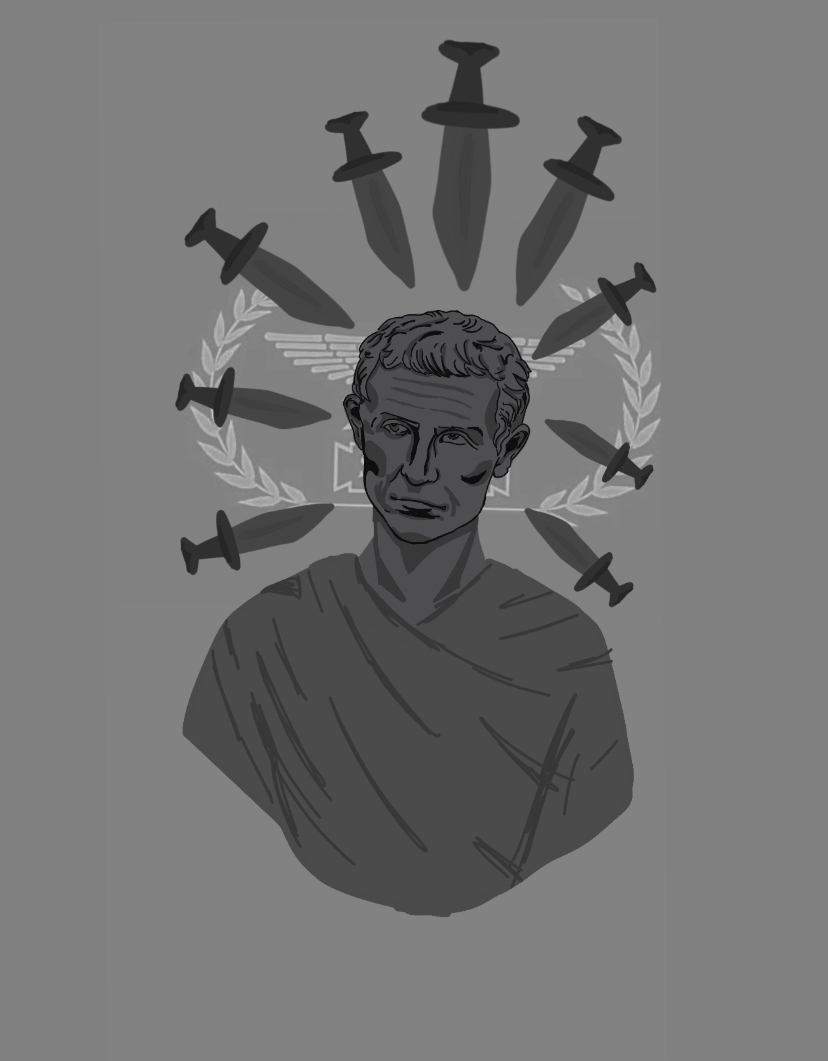Political parties are a threat to national unity and the rapport of government. How can a government work together when by definition they are divided?
The two-party system only causes division and slow government. Every incomprehensibly stupid government system has only come about through this segregation. For example: fillibusters, where a politician will ramble for as long as they can just to stop the opposing party from passing a bill. This causes more unconstructive infighting and division. Gerrymandering as well, a practice used to divide voting districts in favor of a political party. Gerrymandering actively breaks up communities and takes away voters’ rights by making their votes count for less. This causes nothing but conflict. How can a group of such vapid con-artists dare to call itself a people’s democracy when it harms its own citizens to uphold an antiquated and unnecessary system?
John Adams, a founding father, once said, “There is nothing which I dread so much as a division of the republic into two great parties, each arranged under its leader and concerting measures in opposition to each other. This, in my humble apprehension, is to be dreaded as the greatest political evil under our Constitution.” Despite his wishes, we have divided.
There is a political science term, Duverger’s law, stating that in political systems with single-member districts and the plurality voting system, only two main parties tend to emerge. This, however, does not mean that a two-party system works best.
Despite the “two-party system” the United States houses more than 54 political parties. The Green Party, Reform Party, Libertarians, Constitution Party, and Natural Law Party are currently some of the U.S.A.’s most active third parties. However, the last third party president was Abraham Lincoln, a member of the Republican Party when the Whigs and the Democrats reigned supreme.
A Fielder poll of 107 students showed that 21.8% don’t support either party, with another 7% declaring themselves supporters of an independent or third party. Another survey from the Pew Research Center showed that 34% of eligible American voters did not feel represented by the major parties, Democrat and Republican, which respectively had 32% and 30%. Despite this, the Pew Research Center still showed that 62% of Americans did not believe an independent party could win the presidency within the next quarter century.
If a majority of Americans do not believe in either the Democrat or Republican party, yet one of them wins every election, then the system is obviously flawed.
The main argument against third parties is that votes for third-party candidates are “wasted” since they are unlikely to win. Only around 2% of all votes are for third parties. The highest percentage ever awarded to a third-party candidate was for Ross Perot of the Reform party in the 1992 election who received 18.9% of the popular vote, about 19,741,065 votes, but no electoral college votes.
There is truth to the “wasted votes” argument, but what is really wrong is the winner-take-all voting system. There are other ways to vote. For example, approval voting is a single-winner electoral system where voters list all the candidates they support in order of support, rather than just choosing one. With an approval system, there will be no votes “wasted” as if a smaller candidate does not get enough votes, the vote is passed to the voters’ next choice, and so on. With approval voting, voters would be able to decide without fear.
Approval voting can work, and it has been shown to work. Government elections in St. Louis, Missouri, and Fargo, North Dakota all utilize the system. Why not here? Why not nationwide? Traditional voting does not work, approval voting does.





